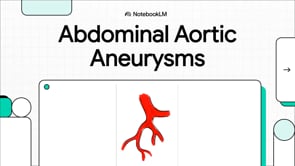מומחה מוביל בביולוגיה של ההזדקנות, ד"ר סטיבן אוסטד, MD, PhD, מסביר מדוע המחקר על מחלת אלצהיימר נכשל. הוא מפרט את המגבלות של מודלים בעכברים לחקר הידרדרות קוגניטיבית אנושית. ד"ר סטיבן אוסטד, MD, דן בחיפוש אחר מודלים טבעיים טובים יותר ובגורמי הסיכון החברתיים המורכבים של המחלה. הוא מדגיש את ההשפעות המגנות של השכלה, הכנסה ופעילות גופנית כנגד דמנציה.
מגבלות המודלים החייתיים במחקר ומניעת מחלת אלצהיימר
קפיצה לפרק
- כשלונות מודל העכבר במחקר אלצהיימר
- החיפוש אחר מודלים טבעיים למחלת אלצהיימר
- האם אלצהיימר היא מחלה ייחודית לבני אדם?
- גורמים חברתיים בסיכון לדמנציה
- גורמים מגינים מפני הידרדרות קוגניטיבית
- כיוונים עתידיים למחקר אלצהיימר
- תמליל מלא
כשלונות מודל העכבר במחקר אלצהיימר
ד"ר סטיבן אוסטד, MD, PhD, מציין כי המחקר לטיפולים במחלת אלצהיימר היה כישלון מוחלט. הוא מצביע על כך שיותר מ-300 טיפולים שפותחו במודלי עכברים לא תורגמו לטיפולים אפקטיביים בבני אדם. מציאות קשה זו מובילה את ד"ר אוסטד למסקנה קריטית. העכבר אינו מודל מספק להבנת הביולוגיה המורכבת של מחלת אלצהיימר האנושית.
החיפוש אחר מודלים טבעיים למחלת אלצהיימר
בעיה משמעותית בתחום היא היעדר מודלים חייתיים טובים. ד"ר סטיבן אוסטד, MD, PhD, מסביר שהמודלים הקיימים הם קריקטורות גנטיות. החוקרים לוקחים גנים אנושיים שידועים כגורמים לאלצהיימר ומשתילים אותם בעכברים. ד"ר אוסטד מציין שאפילו שימפנזים, שדומים גנטית לבני אדם ביותר מ-99%, לא מפתחים אלצהיימר בשכיחות גבוהה. דבר זה הופך אותם לבלתי מתאימים למחקרי מודלים טבעיים.
האם אלצהיימר היא מחלה ייחודית לבני אדם?
ד"ר סטיבן אוסטד, MD, PhD, דן במודלים חלופיים מעניינים, כמו הלמור האפור. פרימט זעיר זה מראה נגעים מוחיים הדומים לאלה שבמחלת אלצהיימר upon post-mortem examination. עם זאת, ד"ר סטיבן אוסטד, MD, מציין הבדל קריטי. נגעים אלה אינם ממוקמים באותם אזורים מוחיים כמו בבני אדם. עדות זו מצביעה על כך שאלצהיימר עשויה להיות מצב ייחודי לבני אדם, מה שמסבך את מאמצי המחקר.
גורמים חברתיים בסיכון לדמנציה
מחקרים בבני אדם מאתגרים due to uncontrollable variables. ד"ר סטיבן אוסטד, MD, PhD, מדגיש שאנשים cannot be made to eat the same food or live identical lifestyles. He explains that מחלת אלצהיימר מושפעת profoundly by social determinants. ד"ר סטיבן אוסטד, MD, highlights puzzling correlations that researchers are trying to understand. These include the protective effects of higher education and greater income against developing dementia.
גורמים מגינים מפני הידרדרות קוגניטיבית
המחקר מתחיל לחשוף גורמי סיכון ניתנים לשינוי לאלצהיימר. ד"ר סטיבן אוסטד, MD, PhD, מזהה פעילות גופנית כהתנהגות מגינה מרכזית. גילוי זה, combined with the influence of education and socioeconomic status, paints a complex picture. ד"ר אוסטד suggests that these factors collectively illustrate why a simple mouse model cannot capture the entirety of human Alzheimer's disease.
כיוונים עתידיים למחקר אלצהיימר
הראיון עם ד"ר סטיבן אוסטד, MD, PhD, underscores a paradigm shift in neuroscience. The consistent failure of mouse models necessitates new approaches. ד"ר אוסטד's insights call for a greater focus on human-specific research and the integration of social science. Understanding the biological mechanisms behind factors like education and exercise is crucial for future breakthroughs in preventing and treating Alzheimer's disease.
תמליל מלא
ד"ר אנטון טיטוב, MD: מחלת אלצהיימר ודמנציות אחרות correlate with aging. What are the innovative approaches to cognitive aging?
ד"ר סטיבן אוסטד, MD: מחלת אלצהיימר is fascinating to a comparative biologist like me. We have been spectacularly failing at being able to do anything about Alzheimer's disease. There still aren't any treatments, even though we've had more than 300 treatments that we've developed in mouse models of Alzheimer's disease.
This leads me to think that the mouse is not enough to understand human biology. One of the problems is that we don't have good animal models of Alzheimer's disease. All we've done so far is we've taken some human genes that we know cause Alzheimer's disease, we put them in a mouse, and there's some caricature of Alzheimer's disease.
There don't seem to be any natural models. You would think that chimpanzees that are more than 99% genetically identical to humans would have something like Alzheimer's disease. But so far, we haven't seen it. It's certainly not common enough to study.
So what we need are some better natural models. Now there are a couple that are intriguing and may be helpful. One of them, believe it or not, is a very tiny primate called the gray mouse lemur. It weighs only 100 grams. It seems to show something very similar.
Looking at the brains post mortem, they seem to have similar lesions to Alzheimer's disease. However, they're not in the same places as in humans. This may be something that's a human-specific disease. We're still not sure about that.
But that makes it very, very difficult to study because humans are terrible experimental models. We can't have them all eat the same food and live the same lifestyle. Alzheimer's disease also seems to be affected by so many social determinants.
There's another level of biology that we don't understand. Why does a higher level of education reduce the risk for Alzheimer's disease? Why are people who make more money more protected from Alzheimer's disease?
I think we're starting to learn a little bit because now we understand that physical activity is protective against Alzheimer's disease. So I guess if you put all these things together, it makes us realize the limitations of a mouse for trying to understand a complex human disease like Alzheimer's disease.





